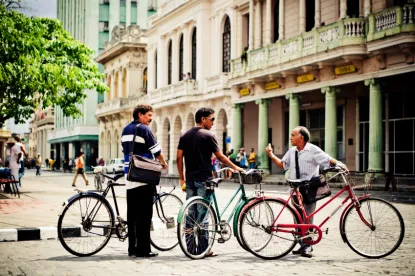Bicycling has increased by 60% over the past 15 years. Once considered an activity associated mainly with exercise or with leisurely rides on summer vacations, biking has become a commonplace mode of primary transportation for many people in cities and suburbs across the country. With this increase in usage, there has also been a marked increase in the number of serious collisions that have occurred involving bikes and motor vehicles as well as collisions that have occurred with bikes and pedestrians.
Today, I will focus on a recent case where a cyclist collided with a truck that was parked on a roadway.
The bicyclist was riding on a two-lane rural, nonresidential roadway when he collided with the back of a UPS truck that was parked partially on the road. The bicyclist suffered major injuries, which resulted in complete quadriplegia. He sued UPS, alleging that its driver violated a state code that prohibits drivers from leaving their vehicles on the main part of a highway unless it is impractical to do otherwise. The injured bicyclist alleged that the defendant endangered others on the road by failing to train its drivers on the applicable parking laws in an effort to promote driver efficiency.
The defendant argued that the plaintiff should have avoided the truck. The plaintiff had been a band director earning about $60,000 per year but now was unable to work. The jury awarded the plaintiff about $9.36 million, but found the plaintiff to be 50% at fault for the collision. The case is currently on appeal.
The case is just one example of the many dangers that bicyclists face while riding. Vehicles, pedestrians, objects in the roadway and weather conditions all pose potential hazards for bicyclists. Bicyclists must be constantly aware of the road conditions and their surroundings, because even a simple mistake can result in catastrophic collisions.
There are many tips to stay safe on the road, and none of them should be ignored or taking lightly. You should always wear a helmet and make sure to follow the rules of the road. Make sure there are working lights and reflectors on your bike, helmet and clothing. Even though you can see a vehicle, pedestrian or fellow biker, that does not mean that the other person is alert to your presence. Be attentive and responsible as you ride, taking care to observe the traffic, road and weather conditions. A sudden storm can make the road slick, thus increasing your chances of skidding. As the sun sets earlier and earlier with the start if winter, it will become harder for others to see you on the roadway. Drivers have a tendency to speed on rural roads, which is a danger to everyone. City streets can be jammed with pedestrians, signs and other things that can potentially distract a driver and put a bicyclist in danger.
Biking is an efficient, cost-effective and environmentally-friendly mode of transportation. It is also a great way to get some exercise and enjoy the outdoors and open roads. Just be sure to always use common sense, ride safely, and obey all traffic laws.



 />i
/>i

